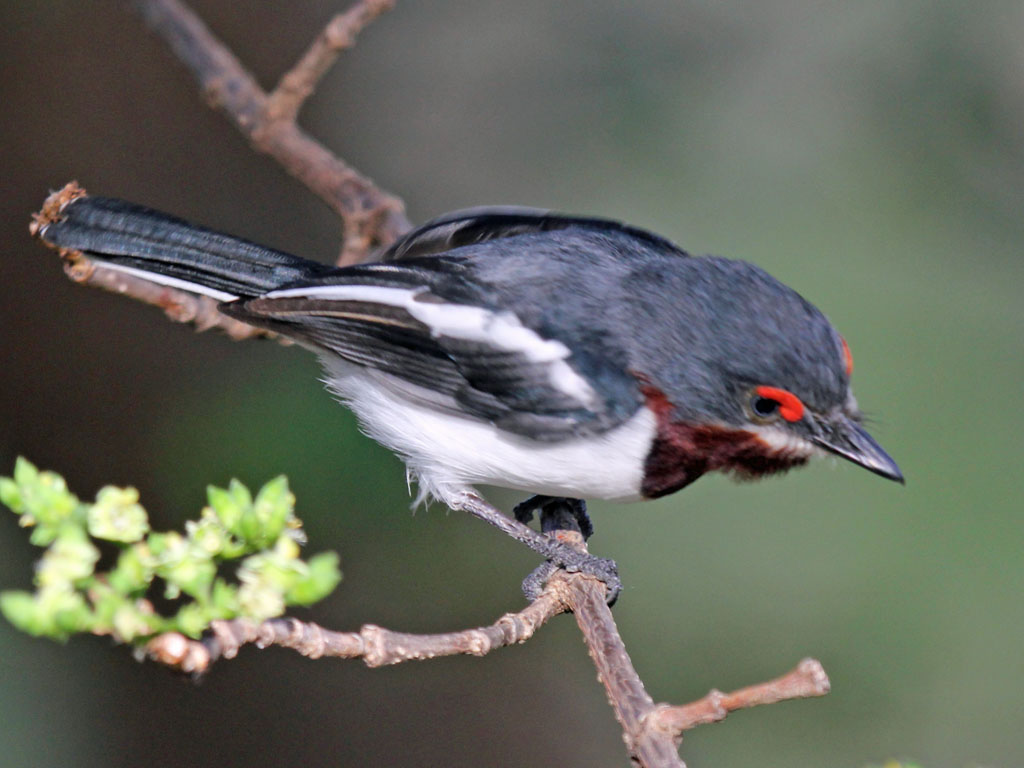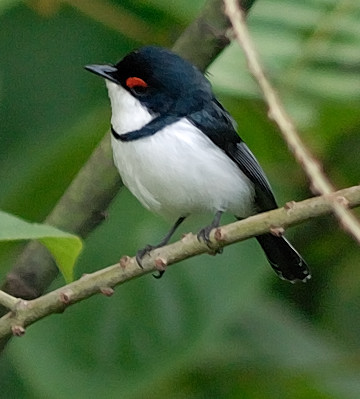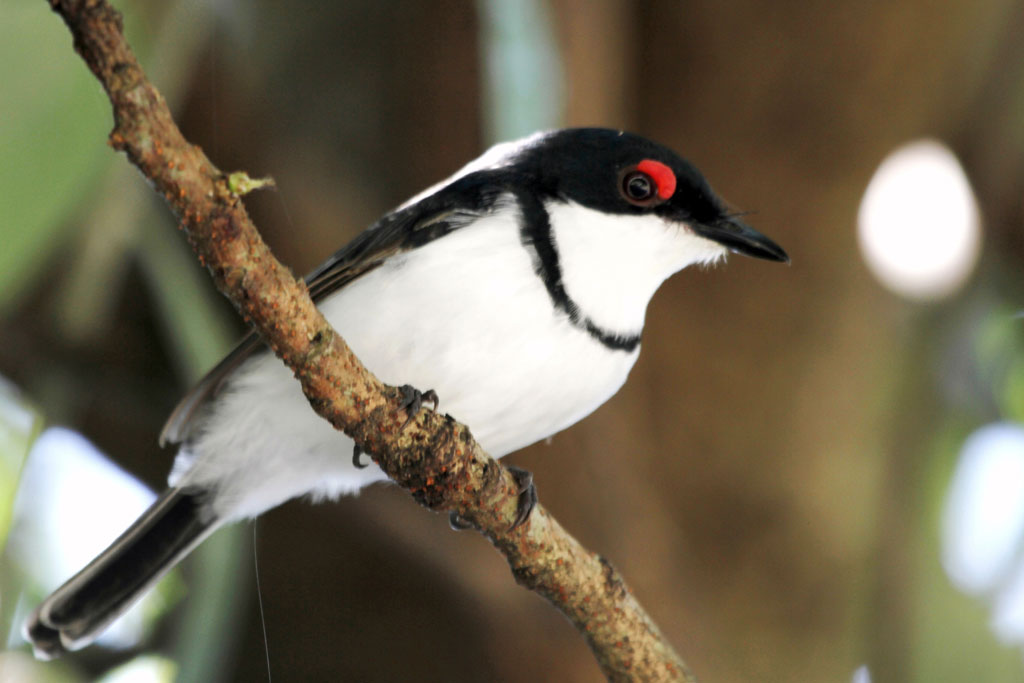
Platysteira peltata
SUBFAMILY
Platysteirinae
TAXONOMY
Platysteira peltata Sundevall, 1850.
OTHER COMMON NAMES
English: Wattle-eyed flycatcher; French: Gobemouche caronculй
а gorge noire; German: Schwarzkehl-Lappenschnдpper;
Spanish: Ojicarunculado de Garganta Negra.
PHYSICAL CHARACTERISTICS
The body length is about 5.5 in (14 cm). The head is relatively
large, the tail short, and the wings rounded. There is a red
patch of bare skin (an eye-wattle) over the eye. The male is
colored glossy green-black on the head, with a dark gray back,
and white belly. The female is a duller color and has a dark
ring across the breast.
DISTRIBUTION
A widespread, nonmigratory species of southern subtropical
Africa.
HABITAT
Occurs in primary and mature secondary lowland and montane
forest, often in the vicinity of surface water. It occurs at
5,600–9,900 ft (1,700–3,000 m)
BEHAVIOR
A nonmigratory species that occurs in pairs or as small family
groups. Breeding birds defend a territory. The song is a rasping
series of notes.
FEEDING ECOLOGY AND DIET
Searches actively or from a perch for insects in the lower
canopy and sometimes higher. Insects are gleaned from foliage
and also caught in flight.
REPRODUCTIVE BIOLOGY
Builds a small cup-shaped nest in a narrow fork of a branch.
Lays one or two, glossy gray-green eggs that are incubated by
the female for 16–18 days. Pairs are monogamous but their immature
progeny help them with their breeding effort.
CONSERVATION STATUS
Not threatened. An endemic species but locally abundant in
parts of its range.
SIGNIFICANCE TO HUMANS
None known, except for the economic benefits of birdwatching.
Photo Gallery of - Black-throated wattle-eye




 Animalia Life
Animalia Life